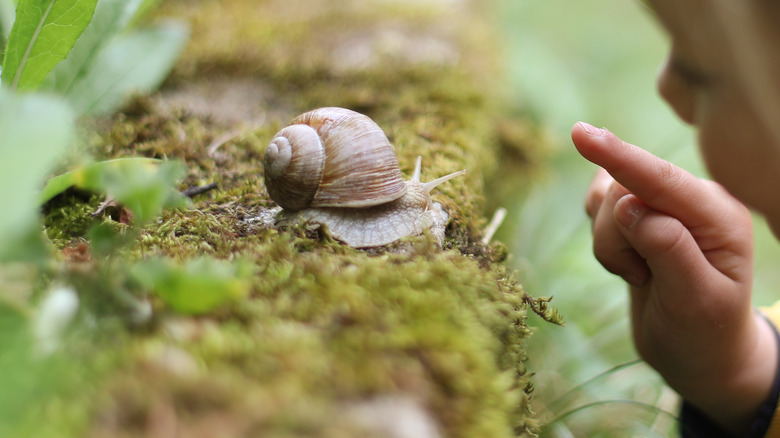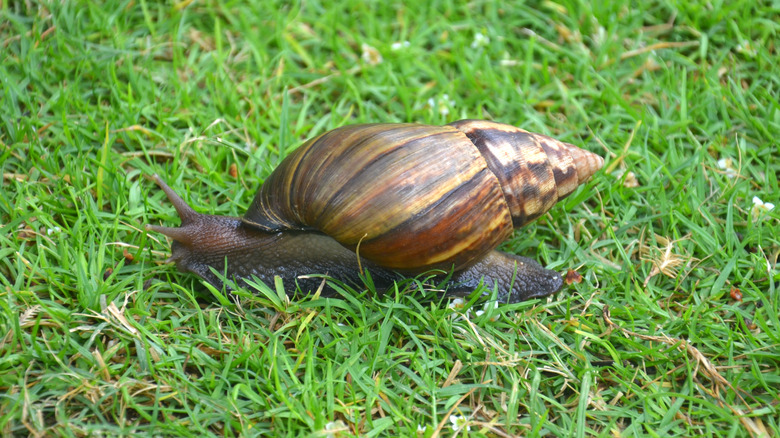The One Garden Snail You Should Never Touch
Snails can be a real nuisance in the garden, sometimes munching their way through plants and vegetables at an alarming rate. However, they are usually relatively easy to deal with, and the vast majority are harmless to people. There are exceptions. Cone snails are venomous, and apple snails carry unpleasant parasites, but as both are aquatic species, it's rare you'll come across one in your backyard.
However, if you live in Florida or Hawaii, there's an invader called the giant African snail (Lissachatina fulica) that can be a serious problem. Although there are numerous tips for keeping snails and slugs out of your garden, this is one slimy critter you should never even touch. They are primarily known for transmitting the rat lungworm, which is known to cause potentially fatal meningitis. That's only one danger. Scientists have linked them to at least a further 36 pathogens (organisms that cause diseases), with around two dozen of those capable of infecting humans. Although the giant African snail won't bite you, it could be equally lethal.
The giant African snail (known as GAS by the U.S. Department of Agriculture) can grow up to 8 inches long. It is extremely destructive, with a diet of at least 500 different plants. They breed rapidly, laying new clutches of eggs every few months, and they don't even need another snail to do so because they can self-reproduce.
How it got here, and the ongoing battle to eradicate the giant African snail
Needless to say, giant African snails are invasive in the U.S., but how did these monsters get here in the first place? Believe it or not, they were initially imported as pets or food! Somehow one or more escaped, and that's when the problems began. There are ingredients to control snails in the garden, but not much works with the giant African snail. Although the USDA believed it had eradicated them in 1975 and 2021, it is still fighting outbreaks today.
Giant African snails have light and dark brown stripes, and shells have 7 to 9 whorls, including one that covers at least half its length. Severe plant damage is an indicator you have one in your yard. You might also find wide slime trails or ribbon-like snail poop. They usually hide in moist, dark places like thick vegetation or under rocks, discarded pots, etc.
There's a whole bunch of the worst garden pests you'll want to banish from your yard immediately, but the USDA warns not to try to tackle giant African snails yourself. Definitely do not touch them. If you really must move one, wear gloves and avoid contact with your body. Take a photo, make a note of where you saw it, and contact either your state plant health director or state department of agriculture. It's a reflection of how seriously agencies take these snails that the area could be quarantined and treated with a molluscicide, a specialist pesticide developed specifically to kill slugs and snails.

